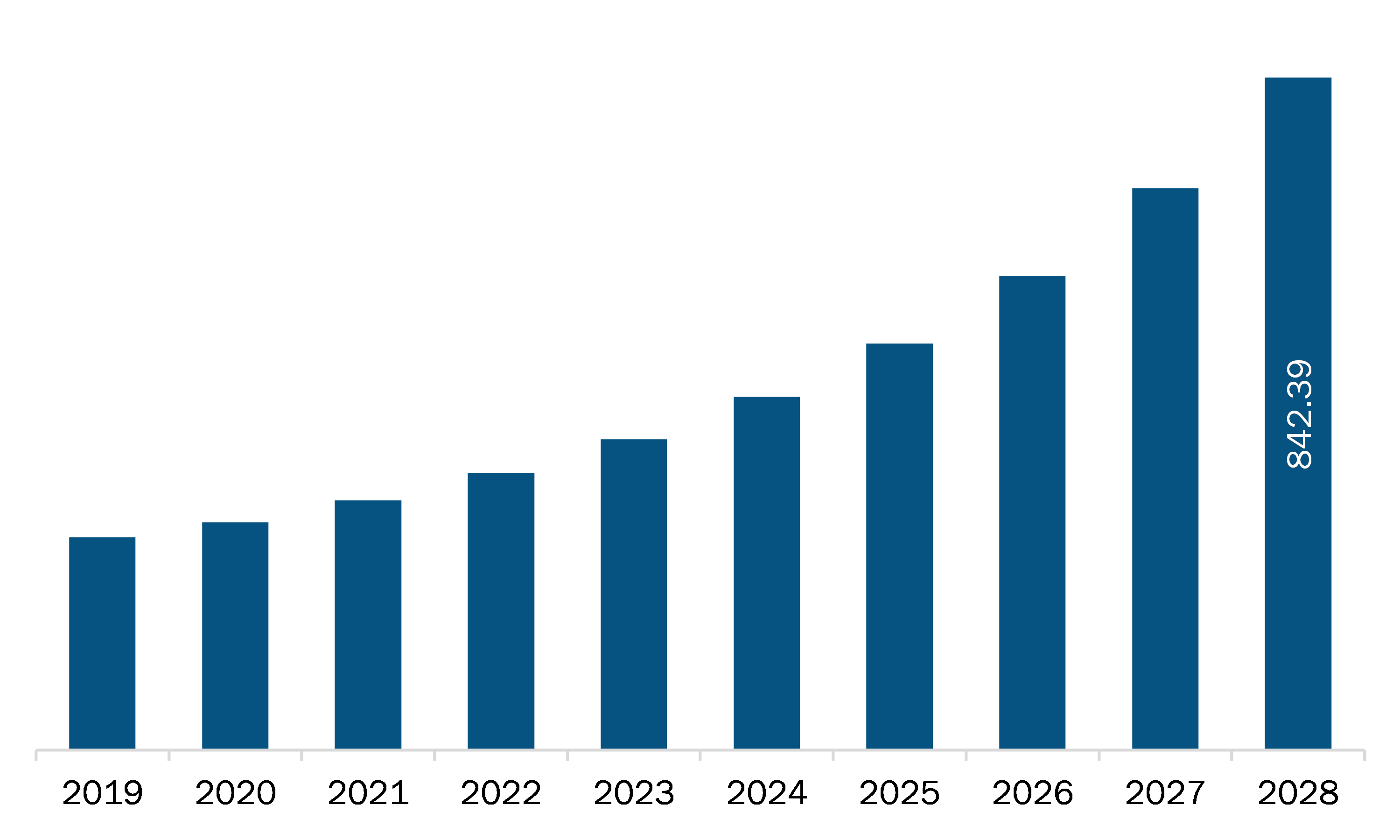The MEA subscriber data management market is expected to grow from US$ 312.66 million in 2021 to US$ 842.39 million by 2028; it is estimated to grow at a CAGR of 15.2% from 2021 to 2028.
The UAE, Saudi Arabia, and South Africa are major economies in MEA. Burgeoning growth opportunities in developing economies is expected to fuel the MEA subscriber data management market growth. The Saudi Arabia is expected to have the fastest growth rate due to a large number of telecom operators and subscribers in the country. As the number of telecom subscribers grows, so will the demand for subscriber data management. To securely manage the data generated by the increase in the number of customers, the demand for SDM solutions is expected to rise. Hence, the region has been witnessing partnerships between SDM providers and telecom companies. Several telecom companies teamed with Nokia's core networking technology for 5G in June 2020. ION products, User Plane, Unified Data Management, Multiple Nokia Software, and Session Management functions are included in this agreement. Other factors such as growing investments and innovation by market players is also expected to escalate the MEA subscriber data management market.
In case of COVID-19, MEA is highly affected especially Turkey followed by South Africa, Saudi Arabia, the UAE, Egypt, Morocco, and Kuwait. Saudi Arabia's economy shrank by 7% in the second quarter, indicating how hard the latest coronavirus struck both the oil and non-oil industries, and unemployment reached a new high of 15.4%. MEA is generally an importer of servers and hardware required for the market. The sudden outbreak of the pandemic, restricted import activities from across the globe thereby negatively impacting the market in the region. However, with the population forced to stay indoors due to the rising case of COVID-19 across the region, it has experienced a rise in subscription across various streaming platforms. For instance, In April 2020, the number of consumers of streaming video content in the MEA area increased by 141%. Similarly, when lockdowns were imposed across the area to prevent the spread of Covid-19, the UAE-based video streaming service Starzplay saw a significant increase in subscribers and usage hours. From 1.25 million at the end of 2019 to 1.85 million in September 2020, the number of customers has increased by 600,000. Thus, the sudden rise in subscribers across the region is positively impacting the growth of the market.
With the new features and technologies, vendors can attract new customers and expand their footprints in emerging markets. This factor is likely to drive the MEA subscriber data management market. The MEA subscriber data management market is expected to grow at a good CAGR during the forecast period.

- This FREE sample will include data analysis, ranging from market trends to estimates and forecasts.
MEA Subscriber Data Management Market Segmentation
MEA Subscriber Data Management Market – By Solution
- User Data Repository
- Subscriber Data Federation
- Policy Management
- Identity Management
MEA Subscriber Data Management Market – By Network Type
- Fixed Networks
- Mobile Networks
MEA Subscriber Data Management Market – By Deployment
- Cloud
- On-Premise
MEA Subscriber Data Management Market – ByApplication
- Voice Over IP
- Mobile
MEA Subscriber Data Management Market, by Country
- South Africa
- Saudi Arabia
- UAE
- Rest of MEA
MEA Subscriber Data Management Market -Companies Mentioned
- Cisco Systems, Inc.
- Enea AB
- Hewlett Packard Enterprise Development LP (HPE)
- Huawei Technologies Co., Ltd.
- Nokia Corporation
- Oracle Corporation
- R Systems International Limited
- Sandvine
- Telefonaktiebolaget LM Ericsson
- ZTE Corporation
Middle East & Africa Subscriber Data Management Report Scope
| Report Attribute | Details |
|---|---|
| Market size in 2021 | US$ 312.66 Million |
| Market Size by 2028 | US$ 842.39 Million |
| CAGR (2021 - 2028) | 15.2% |
| Historical Data | 2019-2020 |
| Forecast period | 2022-2028 |
| Segments Covered |
By Solution
|
| Regions and Countries Covered |
Middle East and Africa
|
| Market leaders and key company profiles |
|
- Historical Analysis (2 Years), Base Year, Forecast (7 Years) with CAGR
- PEST and SWOT Analysis
- Market Size Value / Volume - Regional, Country
- Industry and Competitive Landscape
- Excel Dataset
Recent Reports
Testimonials
Reason to Buy
- Informed Decision-Making
- Understanding Market Dynamics
- Competitive Analysis
- Identifying Emerging Markets
- Customer Insights
- Market Forecasts
- Risk Mitigation
- Boosting Operational Efficiency
- Strategic Planning
- Investment Justification
- Tracking Industry Innovations
- Aligning with Regulatory Trends





















 Get Free Sample For
Get Free Sample For